This cardboard and rope chair seeks to redemocratise design with ‘joyful frugality’
Wallpaper* speaks to architect Nipun Prabhakar of Dhammada Collective about the studio’s latest project, ‘Paper Tube, an open-source chair made from discarded cardboard tubes and rope
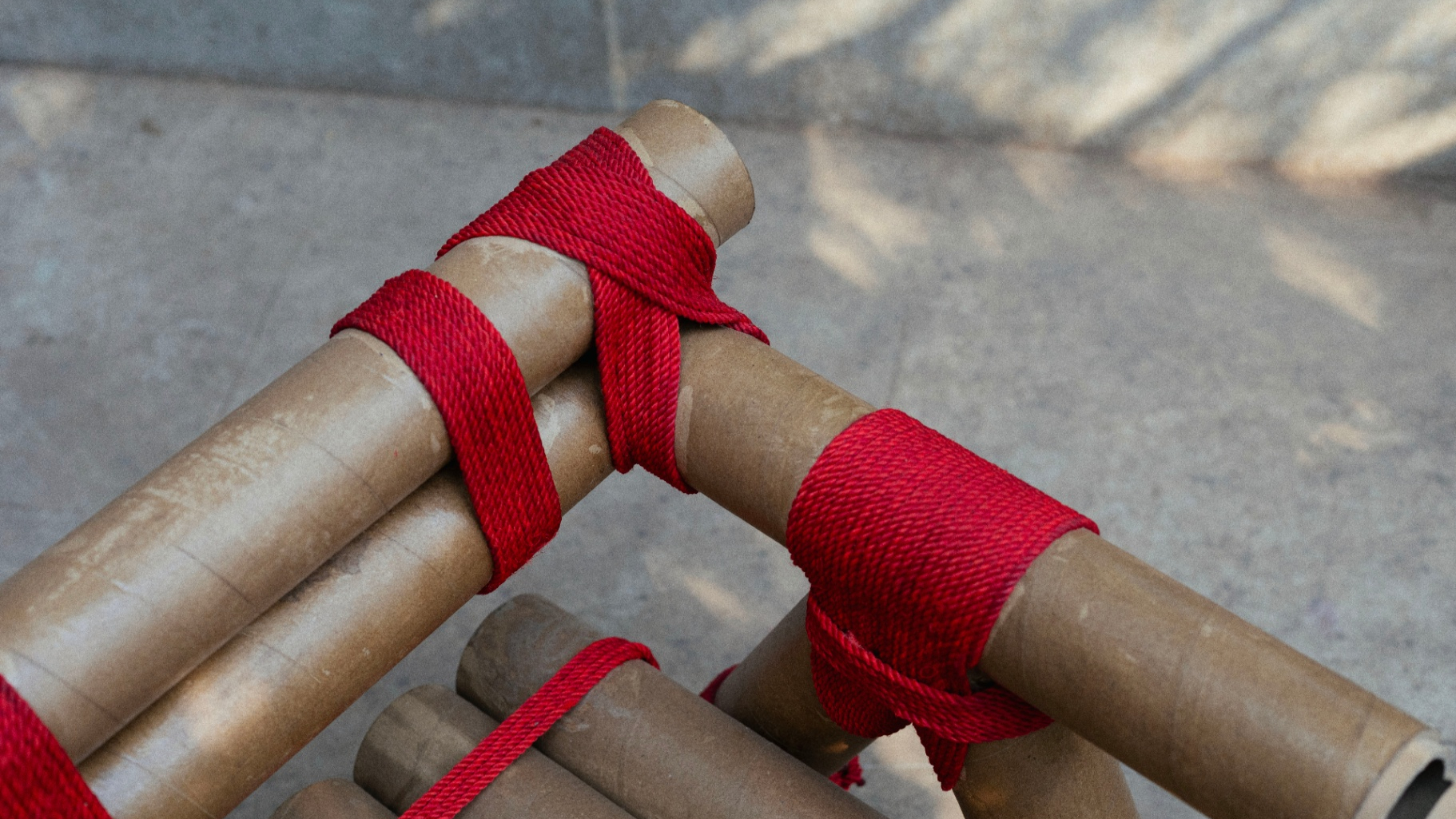
Walking through Pierre Jeanneret’s home in Chandigarh last year, where sunlight is filtered to near heavenly effect by brick jalis, architect, writer and photographer Nipun Prabhakar found himself reflecting on the designer’s celebrated teak library chairs. Once conceived as utilitarian hostel furniture, the 1950s design is now prized at auctions in Paris and beyond. For Prabhakar – who co-runs design studio Dhammada Collective alongside Simran Channa and Nilesh Suman – the disconnect was striking. ‘The dissonance was loud,’ he says. ‘Furniture conceived as public utility transfigured into luxury commodity.’
Back in his home city of Bhopal, the team posed a question: if a chair can be elevated by fetish value alone, can it also be humbled – re-earthed – by waste?
Dhammada Collective's 'Paper Tube' chair
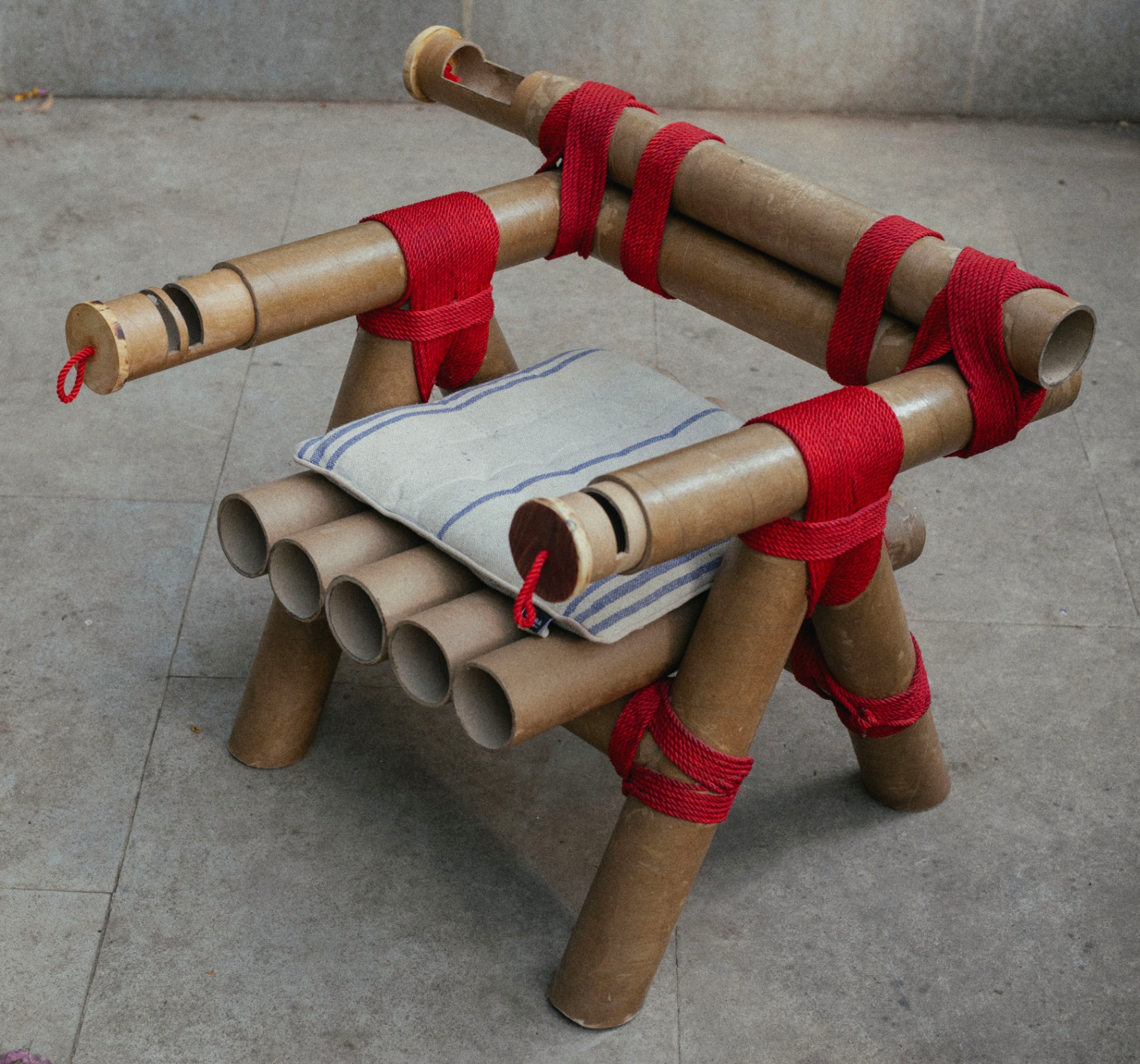
Inspired by Pierre Jeanneret’s Chandigarh chairs, the open-source design swaps teak for discarded cardboard tubes and bright vermilion rope
The project began with a simple act of salvage. Twice a month, the offset print shop down the lane from the collective's studio discards a small mountain of cardboard cores. These thick tubes, made unrecyclable locally due to a glue layer that inhibits pulping, are destined for landfill. ‘We talked to Sachin, the print shop owner, and asked him to save them for us,’ explains Prabhakar. After rescuing a few tubes for quick studio mock-ups, their silent presence began to hint at a larger possibility.
Could these industrial leftovers be used to make a real seat? ‘The very thought felt mischievous, almost heretical – and that’s exactly why we chased it,’ says Prabhakar. Inspired by Shigeru Ban’s use of paper tubes in architecture, the team – including Prabhakar, Channa, Suman and intern Joy Hrangkhawl – began experimenting on a micro scale.
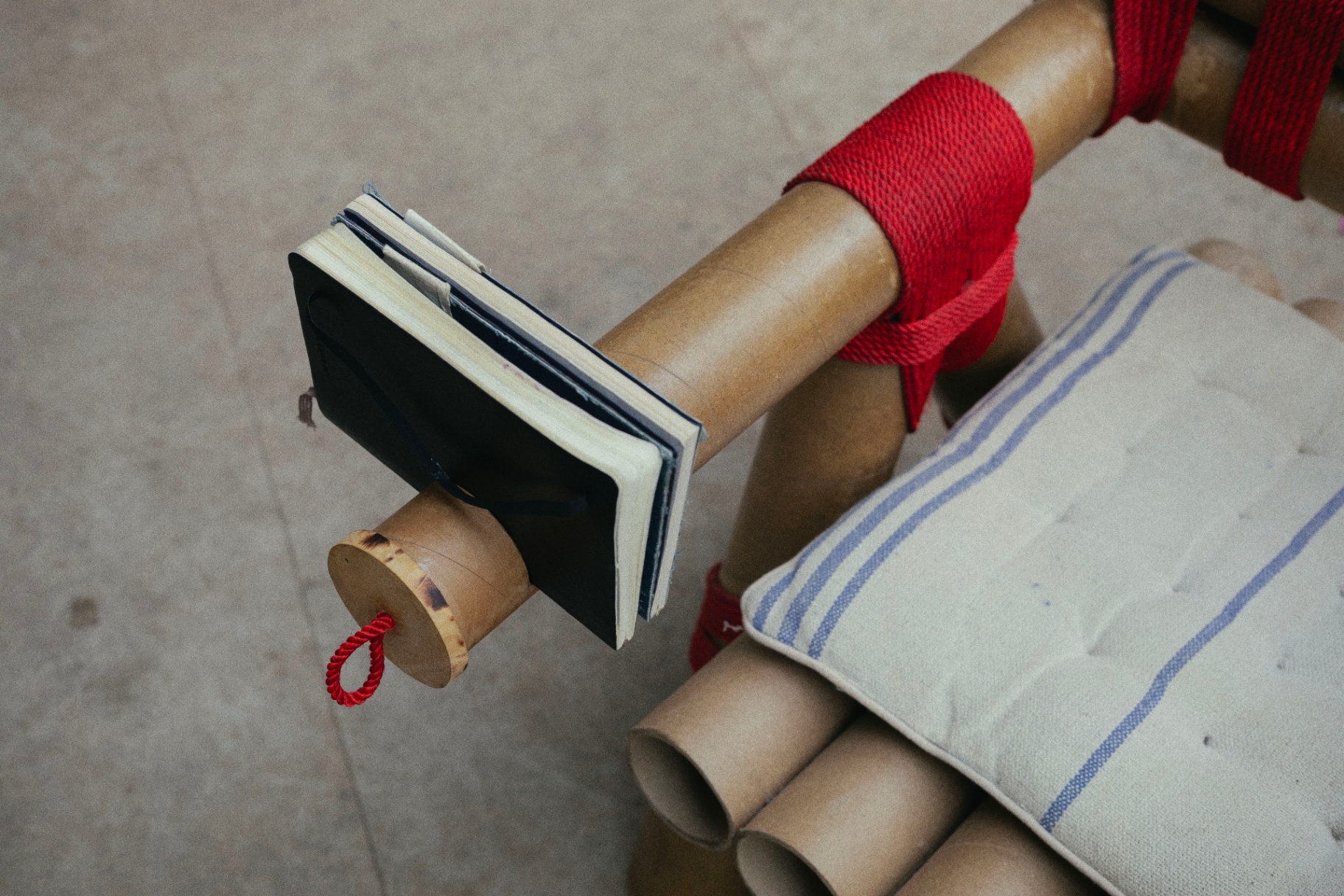
Each component is replaceable, held together by a continuous figure-eight rope lashing – no glue, no nails, just tension
Their first instinct was to recreate a Chandigarh chair in cardboard. ‘It failed marvellously: glue sheared, legs splayed, tubes buckled,’ recalls Prabhakar. But failure proved a crucial turning point, prompting the team to abandon imitation and pursue intent instead. The result is the 'Paper Tube' chair – not a replica, but an experiment in fairness, repairability, and what they call ‘joyful frugality’.
It’s a simple way to show how far an overlooked waste stream can travel when you treat it as structure, not scrap
Nipun Prabhakar
The structure is deceptively simple: cut like bamboo, 15 paper tubes are bound together using a continuous figure-eight lashing in bright vermilion rope, left over from a weaving workshop. ‘Where cardboard dislikes drilling, rope performs a quiet miracle,’ says Prabhakar. The rope tightens under load, flexes with movement, and keeps each component replaceable. ‘Early prototypes collapsed in spectacular fashion, teaching us to insert smaller tubes at key joints and to trust tension over glue.’
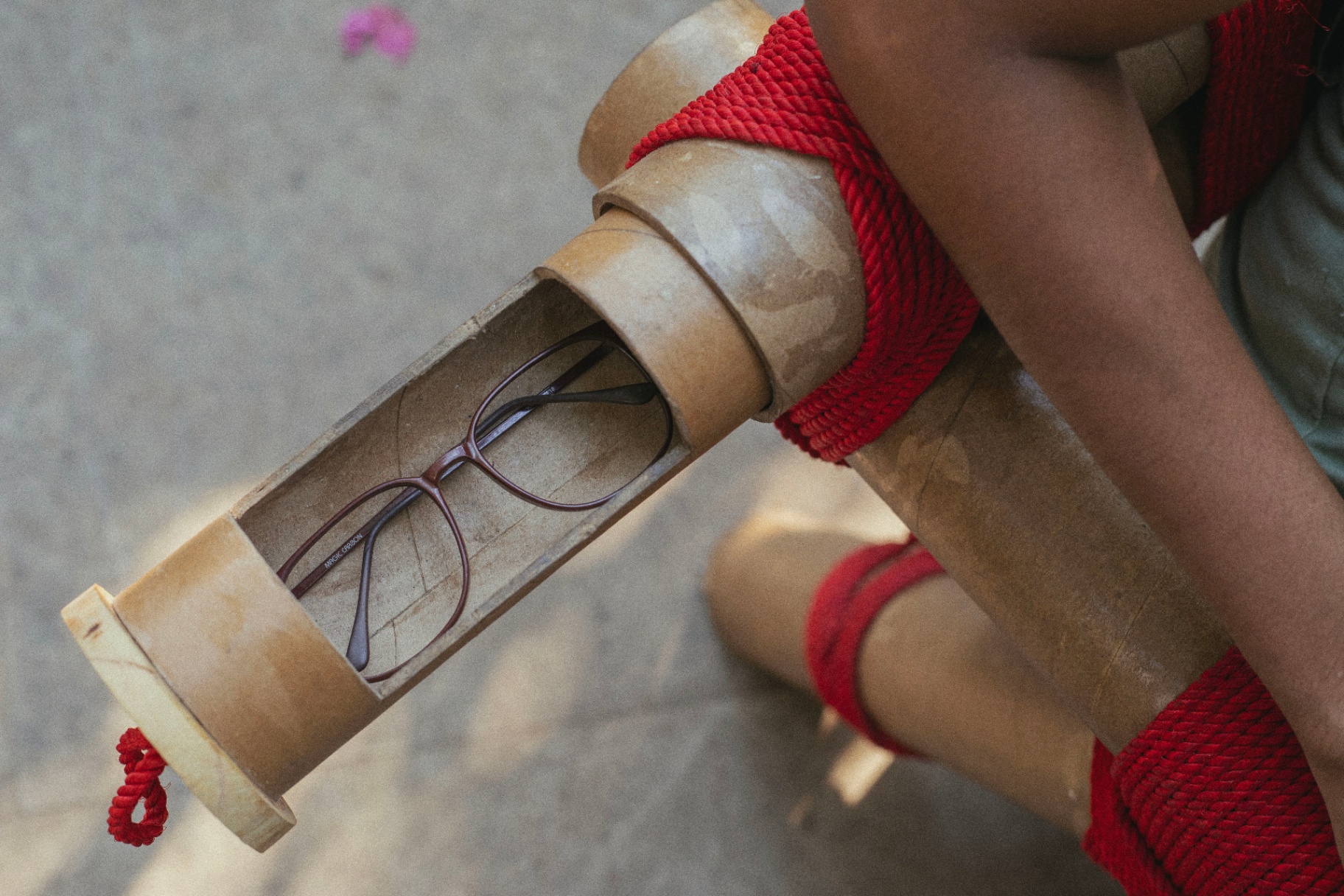
The hollow cardboard tubes double as discreet storage for objects like reading glasses and books
The tubes are kept hollow, doubling as discreet storage pockets. ‘Slide a notebook into one arm, tuck away spectacles in another, or store pencils under the seat,’ he suggests.
Receive our daily digest of inspiration, escapism and design stories from around the world direct to your inbox.
One challenge was edge wear caused by friction and weight. ‘To solve this, we 3D-printed protective bases for the bottoms,’ says Prabhakar. ‘We also reinforced the rope holes with 3D-printed washers.’ The result is a design that’s honest about its origins: each tube is finished with a thin coat of varnish that seals the fibres but leaves every scratch and printer’s code visible, a subtle nod to its past life.
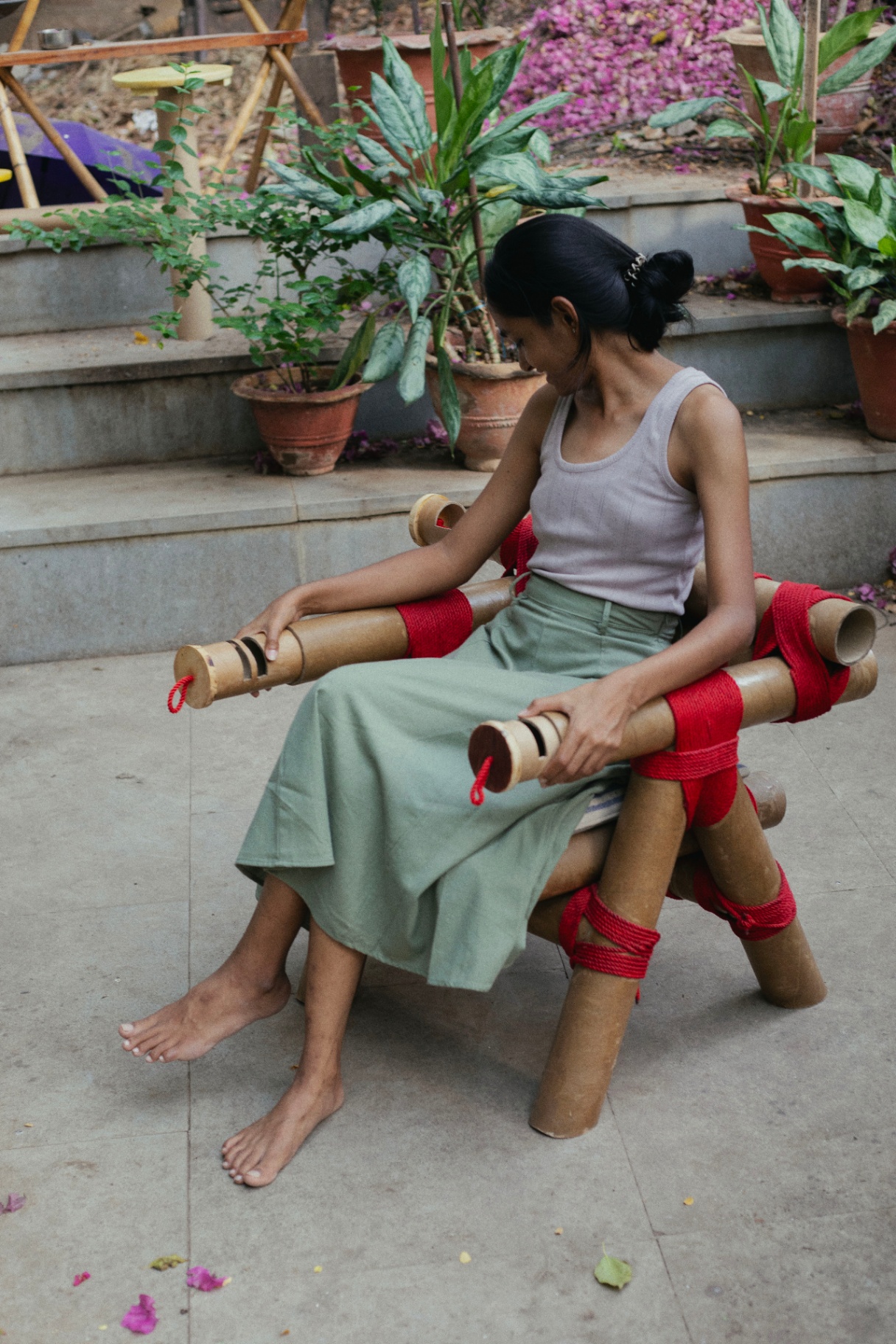
Dhammada says the chair is an open-source invitation for others to adapt and experiment with
For Dhammada, the 'Paper Tube' chair is an open-source invitation for others to experiment. ‘If you can grab a few print-shop tubes and some rope, you already have everything you need,’ says Prabhakar. ‘Lashing is a skill to be learnt, but beyond that, I’m keeping the project light – just an invitation. I’ll be happy to share our experiences and failures with anyone interested.’
The team is now developing a series of paper-tube birdhouses in various shapes and sizes. ‘It’s a simple way to show how far an overlooked waste stream can travel when you treat it as structure, not scrap.’
Ali Morris is a UK-based editor, writer and creative consultant specialising in design, interiors and architecture. In her 16 years as a design writer, Ali has travelled the world, crafting articles about creative projects, products, places and people for titles such as Dezeen, Wallpaper* and Kinfolk.
-
 Modernist Scotland explores the country’s impressive legacy of contemporary architecture
Modernist Scotland explores the country’s impressive legacy of contemporary architectureA new book, Modernist Scotland, delves into the art and ambitions of the International Style in post-war Scotland, presenting 150 projects that typify an age of optimism and innovation.
-
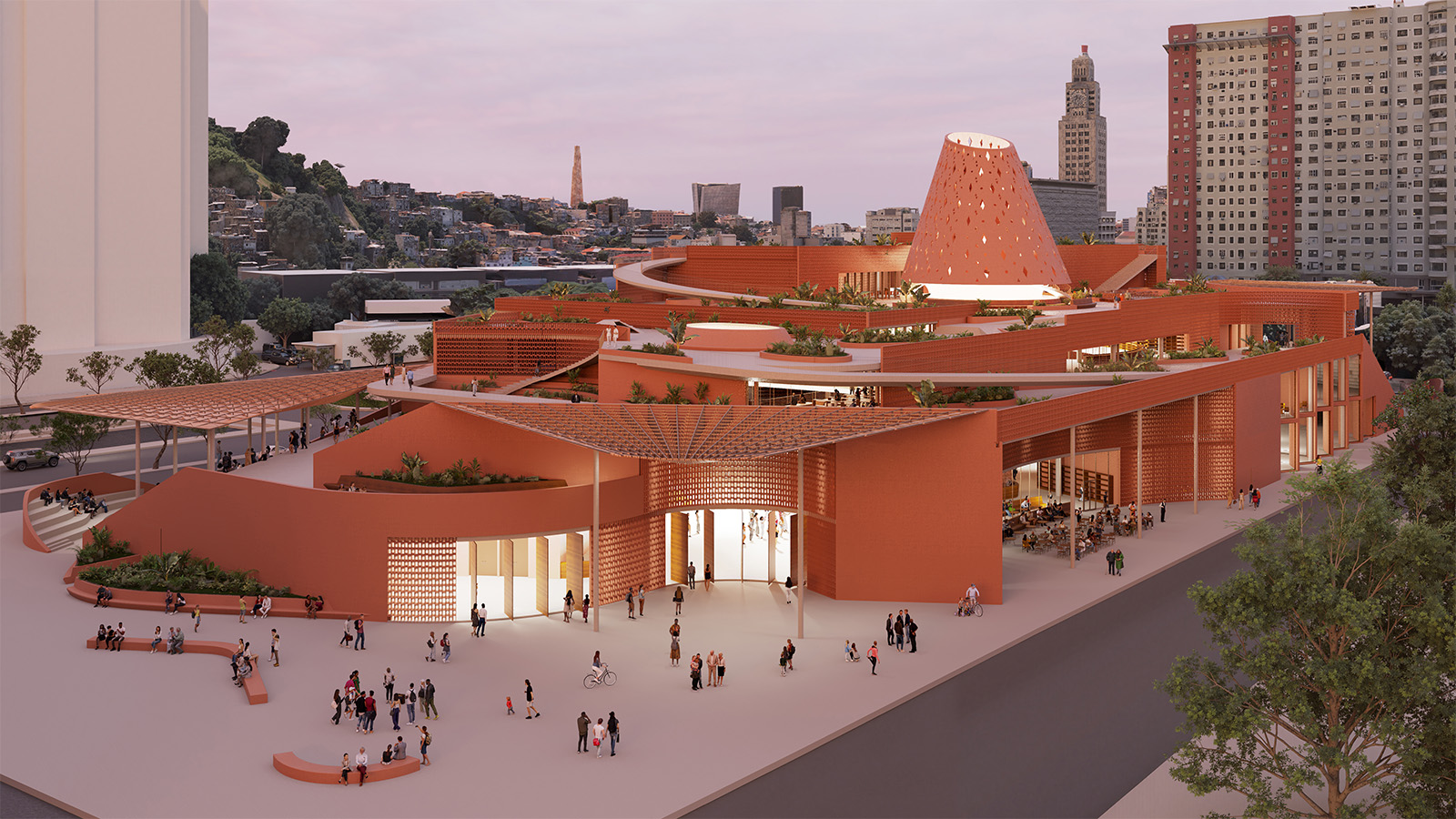 An exclusive look at Francis Kéré’s new library in Rio de Janeiro, the architect’s first project in South America
An exclusive look at Francis Kéré’s new library in Rio de Janeiro, the architect’s first project in South AmericaBiblioteca dos Saberes (The House of Wisdom) by Kéré Architecture is inspired by the 'tree of knowledge', and acts as a meeting point for different communities
-
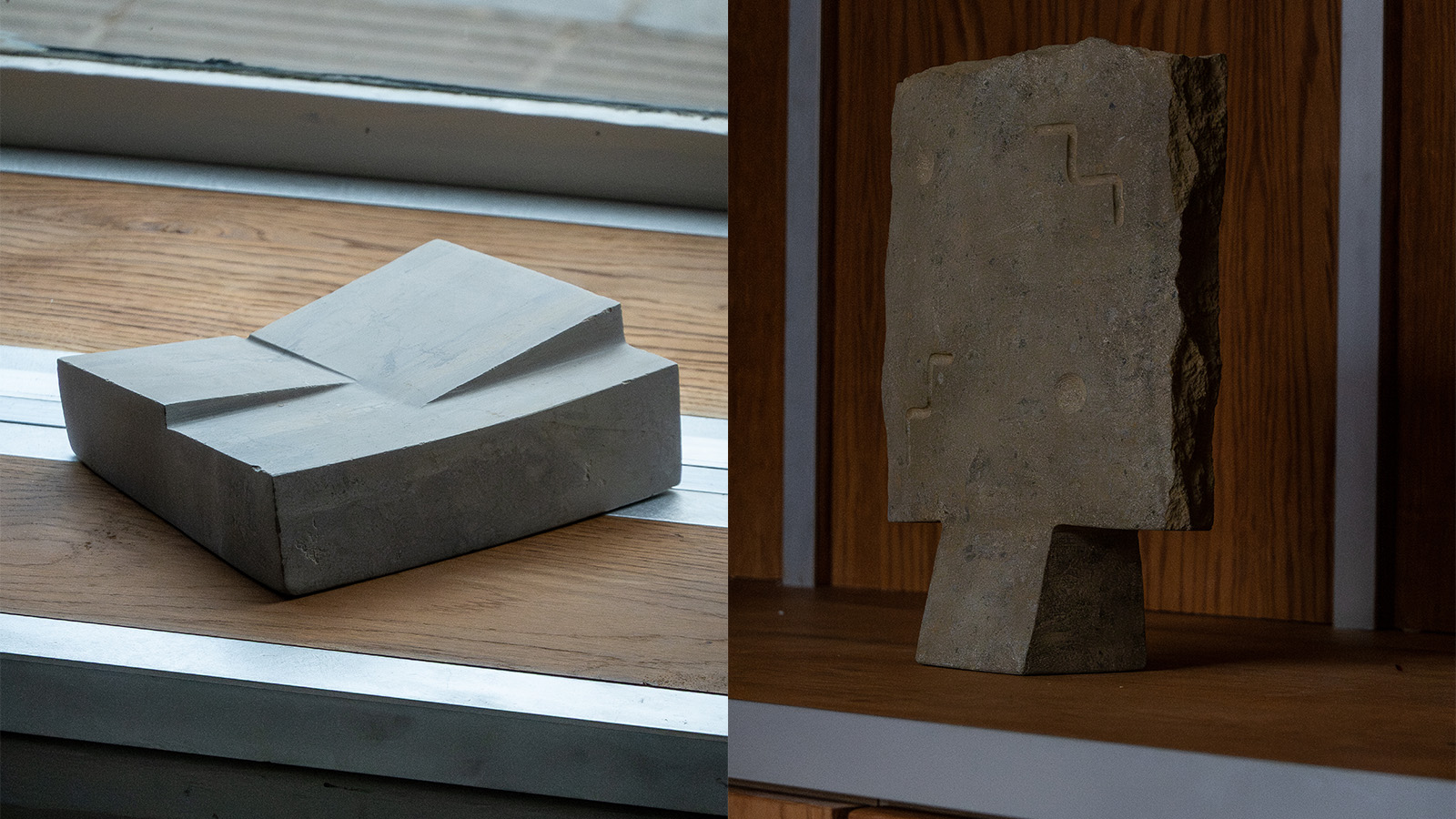 Samuel Collins’ stone sculptures capture the raw and rugged nature of the British landscape
Samuel Collins’ stone sculptures capture the raw and rugged nature of the British landscapeThe British artist and sculptor presents 'Silence Split', a series of stone sculptures which presents an abstract take on the horizontal and vertical landscape
-
 Design ni Dukaan’s new collection both revives and reimagines endangered Indian crafts
Design ni Dukaan’s new collection both revives and reimagines endangered Indian craftsBy using traditional aesthetics and methods in collaboration with their last living artisans, ‘Roop Aroop’ demonstrates how vernacular design can be both rooted and radical
-
 This Coimbatore home exemplifies the ‘modern Indian’ aesthetic
This Coimbatore home exemplifies the ‘modern Indian’ aestheticA spiritual pooja room and local artefacts meet European furniture and offbeat design at this intriguing residence in south India, which is the focus of Wallpaper’s interiors series, The Inside Story
-
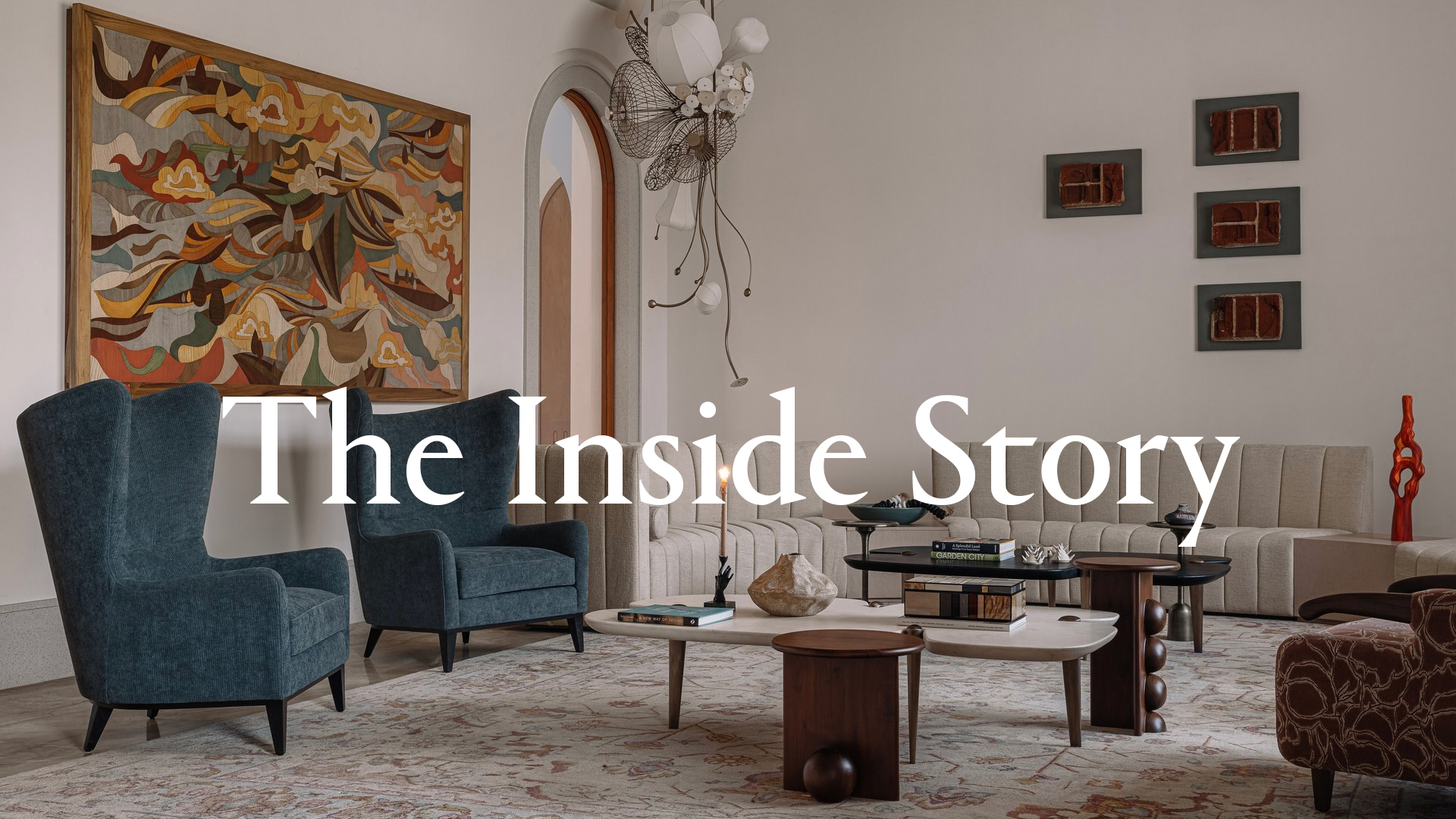 This Gujarat home by MuseLAB is a sculptural, textural delight
This Gujarat home by MuseLAB is a sculptural, textural delightA study in materiality, this home in Gujarat, India layers idiosyncratic details while staying true to its provenance, and is the latest focus of The Inside Story, our series spotlighting intriguing and innovative interior design
-
 This multigenerational Delhi home plays with colour and texture in unexpected ways
This multigenerational Delhi home plays with colour and texture in unexpected waysWelcome to the Wallpaper* series, The Inside Story, where each week we spotlight an intriguing, exciting or innovative interior. This apartment, curated by Studio Jane Designs, finds ever-creative ways to meet the needs of the three generations that live under its roof
-
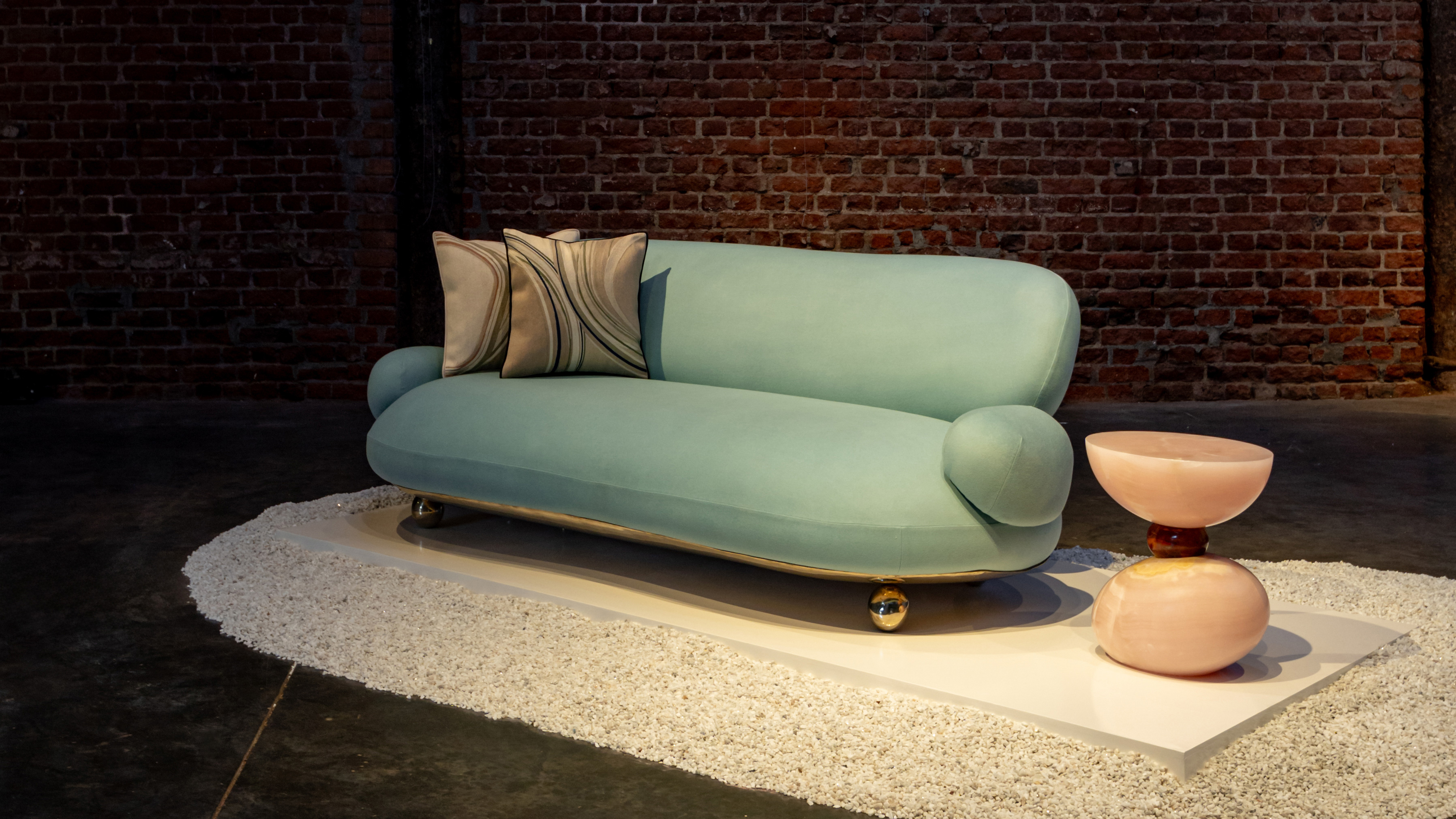 Curvature, cantilevers and cashmere: Mumbai-based designer Rooshad Shroff on his new furniture collection
Curvature, cantilevers and cashmere: Mumbai-based designer Rooshad Shroff on his new furniture collectionRooshad Shroff’s new furniture collection Balance is a masterclass in structural luxury
-
 Sketch is 20: a design history of London’s ultimate entertaining destination
Sketch is 20: a design history of London’s ultimate entertaining destinationA visual history of Sketch: from the world-famous pod loos to India Mahdavi’s Gallery, we chart the evolution of the London restaurant’s inspiring collaborations and colourful makeovers
-
 India Mahdavi monograph reveals a life in full colour
India Mahdavi monograph reveals a life in full colourAn ode to the power of colour, India Mahdavi’s first monograph shines the spotlight on the designer’s trendsetting interiors and signature pieces
-
 Indian kitchen utensils revisited with a contemporary aesthetic
Indian kitchen utensils revisited with a contemporary aestheticDesigners Nikita Bhate and Pascal Hien present SĀR, a new brand of sculptural everyday objects inspired by Indian rituals and cooking traditions